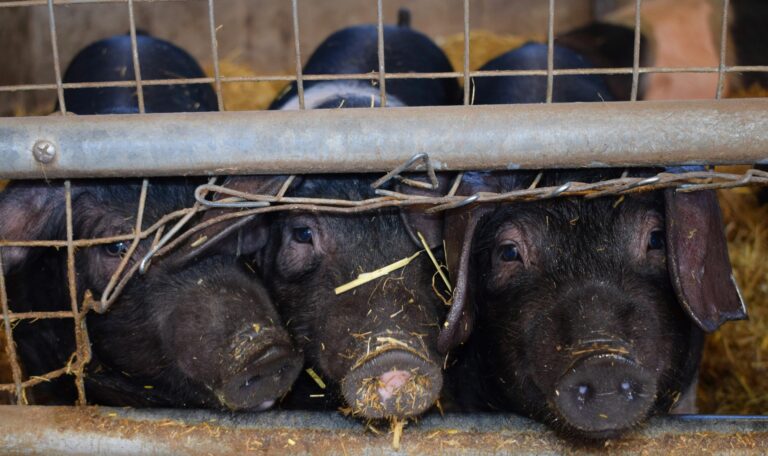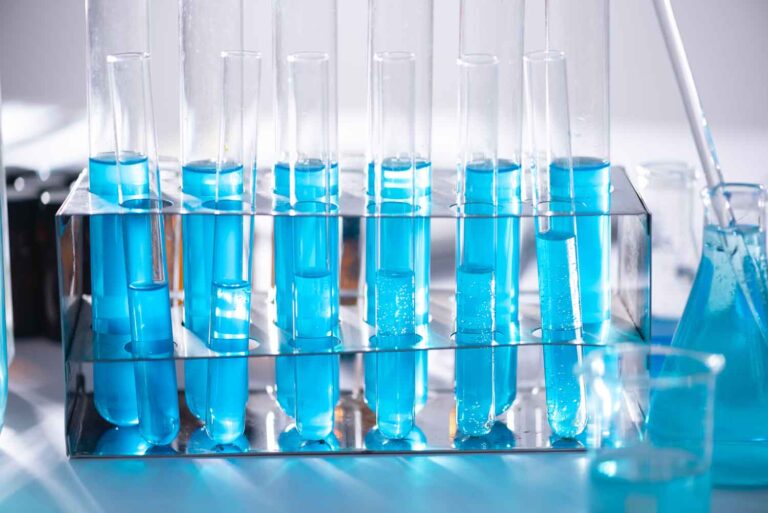This article is a repost with permission from Global Research.
The new myth making the globalist rounds is that GMOs – and glyphosate in particular – are saving the planet. The industrial behemoths who produce the chemicals upon which GMOs depend now pontificate that the world will be rescued by their salvific chemical concoctions. This laughable sales pitch is touted by the Klaus Shwab and Bill Gates crew, to justify wiping out cows, meat, and Dutch farmers. Let us not be fooled.
The proclamation that GMHT (Genetically Modified Herbicide-Tolerant) crops are environmentally beneficial because they will sequester carbon and reduce tillage accompanies the longstanding misinformation that “only industrial agriculture can feed the world.” The opposite is the case.
Increasingly, Big Ag proponents are claiming that GMO crops create more environmental benefits than organic or conventional cropping. Their chief argument is that GMO genetics reduce applications of insecticides and other chemicals, and that because they are more productive (itself a controversial claim) will use less land area and reduce carbon emissions. A typical claim is that “Genetically modified crops support climate change mitigation”:
“As global demand for food production continues to grow, crop yield increases can reduce the need to add new land into production, thus preventing additional CO2 emissions from land-use change.”
The chief complaint against GMOs is that they are most often designed to require applications of chemicals such as glyphosate (Round-up) in order to generate the promised yields. Glyphosate in turn is controversial not merely due to claims that it may be hazardous to humans and other animal life (especially when combined with other chemicals), but that it may pose threats to important soil organisms.
The EPA, CDC and FDA support glyphosate use, but the claim that glyphosate-dependent crops are “environmentally beneficial” resonates like a corporate Pinocchio. GMO proponents assert that fewer chemical applications are required for GMO crops, higher yields are achieved, and increased productivity reduces the use of fossil fuels:
“The technology has also facilitated important cuts in fuel use and tillage changes, resulting in a significant reduction in the release of greenhouse gas emissions from the GM cropping area. In 2018, this was equivalent to removing 15.27 million cars from the roads.
Such analyses distract from underlying concerns about human health – the same article touts new GMOs tolerant to 2,4-D, another herbicide flagged as a potential human carcinogen by international bodies including the WHO (but not by the EPA). It is revealing that the corporate proponents of chemicals as harmless ignore international alarms about health while invoking the Intergovernmental Panel on Climate Change to support climate change assumptions – they “have their CO2 cake and their chemicals too.”
The bold claim is that these chemicals reduce CO2 and will save the planet more than conventional or organic cropping:
“This evidence confirms the correlation between genetically modified, herbicide-tolerant crops and glyphosate use is a driver of the increased soil carbon sequestration. The removal of tillage and adoption of minimal soil disturbances has reduced the amount of carbon released from tillage and increased the sequestration of carbon through continuous crop production. Countries that ban genetically modified crops and are enacting legislation restricting glyphosate use are implementing policies that Canadian farm evidence indicates will not contribute to increasing agricultural sustainability.”
The environmental dilemma between pollution by chemicals versus CO2 is here laid bare. The universal acceptance of the environmental harms caused by manmade chemicals engendered the EPA under President Richard Nixon: Al Gore then pivoted the world into a divisive debate over the impact of CO2. Now we are full circle, with corporate chemical companies like DuPont and Monsanto (now hiding under the once-benign trade name of Bayer) asserting that their highly-profitable and increasingly ubiquitous chemicals must be applied to soil and food to protect us from non-toxic CO2.
But does glyphosate enrich soil health? The evidence suggests that, especially over time, GM-dependent glyphosate reduces soil microbiome health, lowering yields, increasing soil erosion, and adding to water pollution – CO2 doesn’t much toxify water supplies. There are numerous concerns yet unanswered:
“Whilst the effects of glyphosate on human health are coming under scrutiny, scientists are now concerned about our insufficient knowledge of the ecological safety of glyphosate, the way it behaves in the natural environment, how it interacts with living organisms, and the pathways through which it is degraded. ….The Soil Association has reviewed the science on the impact of glyphosate on soils and soil life. For the world’s most widely sold weed-killer, we found surprisingly little research has been done. What research there is shows contrasting results, significant uncertainty and some evidence that glyphosate causes harm. More research is urgently needed.”
The exact degree of carbon dioxide destructiveness to the climate is similarly unknown, yet many rush in to promote these chemicals in food for which a long list of potential risk factors remain. Glyphosate residues persist in soil and water longer than previously thought; adversely affect aquatic invertebrates, amphibians, and earthworms; incorporate toxic adjuvants; threaten rhizosphere, Acidobacteria, Pseudomonas, and other vital soil microorganisms; compromise Arbuscular mycorrhizal fungi (AMF); encourage crop disease reemergence and Superweeds; accumulate in humans; increase soil erosion; inequitably expose black farmers; and release toxic DDT and chlordecone from soil into water supplies.
Like mRNA vaccines and synthetic opioids, agricultural pesticides and herbicides guarantee short-term profits while long-term impacts present many unknown risks.
While globalist-minded industrial agriculture proponents tout their chemical technologies for profit, the science increasingly suggests there are potentially life-killing consequences to this mad rush to spray more chemicals on the landscape in the name of “environmental benefits”:
“In human urine samples, 90 percent of farmworkers, 60 to 95 percent of the general U.S. population, and 30 percent of newborns have high concentrations of glyphosate. ….50 years of extensive glyphosate use also increased human/animal pathogenic bacteria to break down the chemical compound. ….Considering pathogenic microbes are less sensitive or insensitive to glyphosate, these disease-causing microbes can accumulate to worsen adverse health effects. Furthermore, the authors note a connection between gut health and neurological diseases as individuals exposed to glyphosate also experience a higher incidence of ADD/ADHD, autism, Parkinson’s Disease, Alzheimer’s.”
In the world of COVID, the arguments supporting glyphosate as world-saving ignore that the potential risk factors of glyphosate extend beyond carcinogenic properties. They include compromised human immune function.
“….glyphosate kills bacterial species beneficial to humans and incorporated in probiotics yet allows harmful bacteria to persist, leading to resistance. ….Antibiotic resistance can trigger longer-lasting infections, higher medical expenses, the need for more expensive or hazardous medications, and the inability to treat life-threatening illnesses.”
Federal regulatory agencies have not undertaken the research to assess the plethora of health and environmental risks of glyphosate. The Fauci-like EPA seems unconcerned:
“Residues of glyphosate on any food or feed item are safe for consumers up to the established tolerances. Before allowing the use of a pesticide on food crops, EPA sets a tolerance or limit on how much pesticide residue can legally remain on food and feed products, or commodities.”
How can the EPA determine what are safe levels for a substance it claims is non-carcinogenic and for which it has not undertaken rigorous study? The very assurance that there are “safe” levels of residue indicates that there are unsafe levels.
The clarion for GMOs has been tooted loudest by the chemical and food companies who stand to gain the most in profits by their increasing domination of public and private food production resources. Much like vaccine manufacturers touting COVID shots, and pharmaceutical companies pushing OxyContin, these manufacturers collaborate with government agencies charged with protection of human health to promote their products as beneficial despite their obvious harms. Like addictive pharmaceuticals and ineffective vaccines, the domination of food production by chemical-dependent crops will simply create more ill health and yet greater corporate dependency.
The Orwellian assertion that glyphosate will save the planet by decreasing CO2 levels is more than just insincere – it is patently propagandistic, on behalf of overly powerful corporate and private interests who do not properly care for either the ecosystem or humanity. The laundry list of potential environmental harms to human and animal life is inadequately researched. Chemical-peddling companies are investing instead in research of glyphosate-enabled CO2 sequestration, and how many cars won’t be driven on roadways when more Round-up is sprayed on the dying landscape.
Who cares whether glyphosate use sequesters carbon dioxide, when it poses so very many non-CO2 pollution threats? Humanity must resist this glyphosate-laced publicity Kool-Aid.








